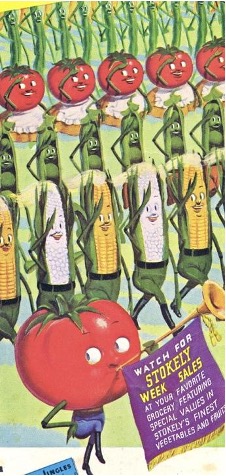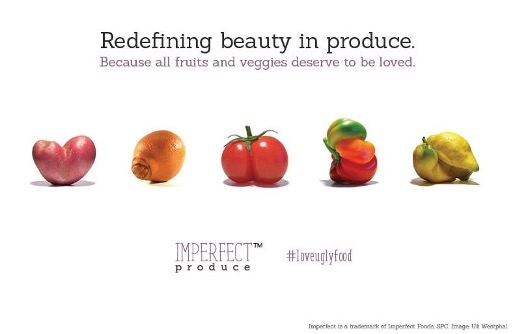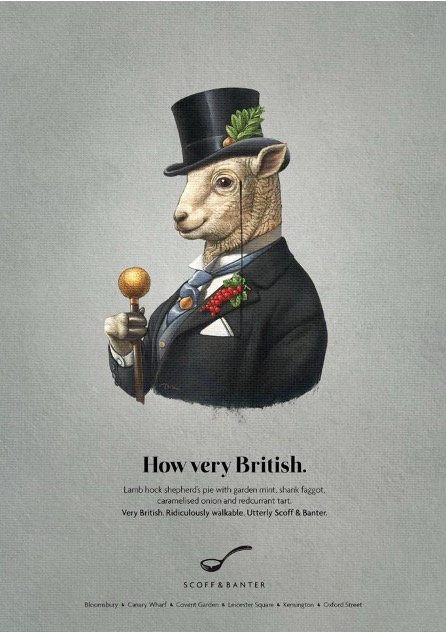Unveiling the effect of anthropomorphism in food marketing
Relevant topics Archive, Strategy
If you are a pet owner, chances are high you are guilty of talking to your cat or dog as if it’s human. Or even give it its own little raincoat when the weather is bad. That sort of interaction is how we create a strong emotional bond with our pet and how it becomes part of the family. Or maybe you give your car a name. A bit strange, but it helps to create a sense of personal connection and attachment to the vehicle. Ever heard of the movie Cast Away? This movie depicts a deep truth about the irrepressible social nature of humans: the main character, who is left alone on a deserted island, personifies a volleyball and names him Wilson. He does this because of his basic need for social interaction. Wilson is the symbol of hope and of his salvation.

Why can’t we help this way of thinking? This is because of evolution. It originates from prehistoric times when our homo sapiens ancestors used anthropomorphism to predict the movements and behavior of their prey, which gave them better hunting skills than their predecessors, the Neanderthals.
Funny how, years and years later we, we often unconsciously still do the same to better understand and predict non-human entities and the world in general or to satisfy our need for social interaction.
But what if we use this principle in marketing? How does it affect consumer behavior, specifically when it comes to food consumption? Let’s see how humanizing food influences our choices and purchase intent.
The various faces of anthropomorphism
Marketing today uses different types of anthropomorphism, which can be categorized into three main types:
1. Physical anthropomorphism
This involves ascribing human-like appearance to the food. Giving food humanlike facial features or body shapes falls under physical anthropomorphism.

For example, vegetables have been portrayed human-like in advertising since forever. Stokely’s had marching fruit and vegetables of all kinds in early advertising from 1937. In fact, tomatoes seem to be one of the more popular fruits to personify. Hunt’s ketchup did it as well in 1967.

2. Verbal anthropomorphism
Verbal anthropomorphism involves treating the food as a person using verbal cues. This can include naming the food, using first-person narratives for it, or either imagining or describing it as a person. Essentially, it involves using language and communication to attribute human qualities to the food.
For example, this UK campaign promotes misshapen fruits and vegetables by usinga first-person narrative.

3. Ascribing human-like (non-physical) qualities
This type of anthropomorphism goes beyond physical appearance and involves attributing humanlike qualities to the food that are non-physical in nature. Examples include ascribing intelligence, emotions, and moral standing to the food. This type focuses on the psychological and emotional aspects of human characteristics.
Kevin the Carrot, Aldi’s end of year hero, and his family are a great example of a combination of all types. They have human-like faces and shapes, they can talk and they show emotion and intelligence.

The milk cow from The Laughing Cow and her friends are also a combination of the various anthropomorphism types: https://www.youtube.com/watch?v=YSOQL5d2KxM
The art of humanizing food
This article discusses the results of a systematic literature review. Most studies on the effects of food anthropomorphism are divided into two parts: favorable and unfavorable consumer responses.
We’ll take a closer look at the effects on regular food, misshapen products and meat animals. Keep in mind that individual factors, including demographics and characteristics, play a significant role in moderating the effects of food anthropomorphism on consumer behavior.
Effects on Regular Food
Giving human characteristics to regular food (easily consumable and with no physical irregularities) positively influences consumer attitude and purchase intentions. This is applicable regardless of the type being used (physical, verbal, non-physical human-like qualities).
Cognitive processes like body perception, conflict resolution, and associations with childlike thoughts play a role in shaping the positive outcomes. For example, in people on a diet the internal conflict associated with consuming tempting food, might lower when the desired food has human-like features. However, humanizing food seems to reduce real consumption, driven by emotions like a sense of immorality of consumption. People may experience a moral dilemma or discomfort about consuming the food, probably because of the emotional connection effect of anthropomorphism.
How do these avocado’s make you feel? https://www.youtube.com/watch?app=desktop&v=Ycv13jEDefA
Effects on misshapen produce
Personalizing misshapen products also increases purchase intention. When consumers perceive misshapen products as if they have human characteristics (physical, verbal or both), it generates positive emotions like empathy. We feel for or understand the misshapen product. Specifically, displaying misshapen produce with a smiling face and presenting shape abnormalities as body parts in point-of-sale communications, trigger positive affective reactions. These affective reactions enhance taste perceptions, thereby leading to higher purchase intentions. This could be a smart way to battle food waste.

Effects on Meat animals
The anthropomorphism of meat animals reduces consumers' intentions to buy or consume meat. It triggers several emotions, and as a result, consumers feel repelled (disgust), morally conflicted (guilt), and emotionally connected to the animals (empathy). This leads to this decrease in consumption intention. This may explain how animal anthropomorphism can reduce meat consumption, especially when consumers already have a low commitment to eating meat.
Experience the effect of humanized meat animals for yourself by looking at the ads below.


While it doesn’t work well on meat animals, anthropomorphism does help promote insect food. Because it creates familiarity and helps overcome neophobia, the fear of the new. And thus, seeing a human-like cricket on a package instead of a real one increases purchase intention.

The study suggests that incorporating anthropomorphic elements in the design and packaging of regular food can positively influence product attitude and purchase desire.
Cultural, age and contextual watch-out
Culture significantly influences anthropomorphic beliefs and consumption patterns, particularly evident in diverse cultural attitudes towards food and animals. While previous studies on food anthropomorphism primarily focused on Western contexts, there is a call for expanding research geographically.
Also age plays a role in anthropomorphic thinking, with children often influenced by it. However, research suggests that personifying food may reduce children’s desire to consume it, highlighting the need for further exploration and understanding of these observations. For example, children might see food as their friend when it’s ascribed with human qualities.
Additionally, we should note that the current literature on food anthropomorphism faces limitations. Only a few studies checked if humanizing food affects what people really buy or eat (not only the intention). Most studies were done online or in labs, not in real-life situations. Also, the way the studies were done doesn't tell us if people keep liking and buying anthropomorphized food over time, or if they get tired of it. We need future research in real-life and on the long-term impact.
Key Takeaways
When building food marketing strategies, it’s interesting to think about how using anthropomorphisms can help you. Keep in mind that the effect on consumer behavior depends on your specific goal, the type of food and your target audience.
What are some possible practical interventions?
- Humanizing regular food in product design and packaging increases aesthetic appeal and is recommended to enhance product attitude and purchase desire.
- Humanizing misshapen produce makes it look more relatable and friendly which tends to make people more likely to buy it. This is a possible strategy to battle food waste.
- Making meat animals seem more human-like usually makes people less interested in eating meat, which can be a helpful strategy for policymakers and animal rights groups trying to reduce meat consumption.
- When introducing new types of foods into the market or dishes into a restaurant, you can overcome the fear of the unknown by making it more relatable and familiar through anthropomorphisms on packaging or in food photography.
Further Reading
-
The Secret Sauce in Promoting Your Healthy Food Product: Keep your Brand Name Sweet and Short
Picture this: you're wandering the aisles of a grocery store, looking for a healthy snack. You come across two seemingly identical products, but one has a brand name that's as long as a Shakespearean monologue, while the other has a snappy, short name that's easier to remember. Which one are you more likely to trust as the healthier choice? Did you rely on your instincts and beliefs about the product rather than scrutinizing its nutritional label?
As consumers, our food choices are heavily influenced by our intuition (Chan & Zhang, 2022; Motoki & Togawa, 2022). In turn, our intuition is largely shaped by branding elements. From brand names to logos and even the personality associated with a brand, these cues offer us valuable information that guides our purchasing decisions.
For instance, foods packaged in green or blue colors are often perceived as healthier, while those in red packaging may trigger a different response (Huang & Lu, 2015; Schuldt, 2013). But what about brand names? Can a simple name affect how we perceive the healthfulness of a product?


